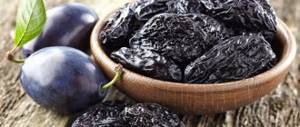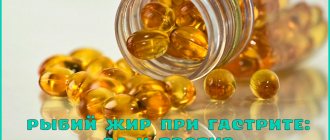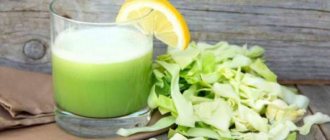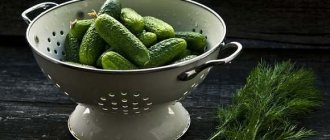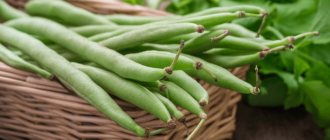Beneficial features
There are 150 types of cabbage in the world and each of them is useful in its own way, one might say, irreplaceable.
For example, cauliflower provides our body with enzymes that take part in thousands of important biochemical reactions. When consumed regularly, cauliflower can inhibit degenerative processes, including the development of tumors.
Fresh Chinese cabbage is not only an immunostimulant, but also a way to combat constipation and intestinal dysfunction. Chinese cabbage belongs to the category of those few products that can remove heavy metal salts from the body. In addition, the Beijing variety of the vegetable and the juice extracted from it are a “balm” for the stomach and duodenum affected by ulcers.
Sea kale is a product that can be considered a record holder for the content of iodine, magnesium and potassium. Sea kale, consumed on a regular basis, has a beneficial effect on the health of the thyroid gland, metabolism and the functioning of the nervous system.
White leafy vegetable is the most popular among housewives at dinner table. Its main value is vitamin U, which promotes the healing of stomach ulcers, improves intestinal motility and helps cure gastritis.
What kind of cabbage can I have?
If the benefits of eating fresh vegetables cannot be disputed, then after fermenting the same cabbage, the question arises: has it retained at least a fraction of the beneficial properties that were in the fresh product?
Sauerkraut retains all its beneficial properties: it has been experimentally established that 200 mg of sauerkraut contains 40 mg of vitamin C (this is approximately the daily requirement for a person). This dish is useful for people with diabetes, since the sour vegetable significantly reduces blood sugar levels.
Sauerkraut, prepared according to all the rules and canons, has a beneficial effect on the intestinal microflora and improves its peristalsis.
Pickled vegetables can also be used as a prophylactic against gastritis, ulcers and dyspepsia.
And even if gastritis has already been diagnosed, sauerkraut can be used as an additional folk remedy. With low acidity, it improves appetite and secretion of gastric juice. If you have high acidity, you can also eat this dish, but in limited quantities. It is only important to avoid using hot spices when fermenting.
Beijing cabbage is usually fermented according to a Korean recipe with the addition of red pepper. That is why the Beijing variety of the vegetable, prepared in this way, should be completely excluded from the diet of a patient with gastritis. But stewed Chinese cabbage can be included in the diet menu, since it does not lose its beneficial properties and does not irritate the gastric mucosa.
Recipes for fermenting cabbage
Classic recipe
- Select 2 medium-sized heads of white cabbage, peel them from “withered” leaves, rinse and chop finely.
- Grate 2 large carrots on a coarse grater.
- Place the chopped cabbage leaves in an enamel bowl and sprinkle with table salt (2 tbsp). Mix everything well, crush the chopped vegetable with your hands so that it releases juice.
- Add cooked carrots and a tablespoon of sugar to the cabbage leaves. Mix everything again.
- Pre-sterilize a three-liter jar. Place the cabbage very tightly in it. Leave for several hours.
- After a couple of hours, you need to check whether the cabbage has released enough juice. If the juice does not completely cover the shredded vegetables, then you need to add cool boiled water to the jar so that it covers all the cabbage.
- Close the jar with a polyethylene lid, in which special holes will be made for the release of gases. Place in a warm place with the bottom in a container into which the rising cabbage juice will drain.
- Every day, pierce the cabbage with a special peeled knitting needle to release excess air.
The dish will be ready in three days. It is better to take samples regularly to prevent “peroxidation”.
Sea sauerkraut
- Dried sea cabbage is mixed with chopped white cabbage and carrots, and then placed in a glass jar.
- Vegetables are completely filled with clean boiled water.
- The jar can be left open in the room, but first you need to place a dish under the bottom.
- Several times a day, you need to pierce the vegetables with a knife or knitting needle, releasing excess bitterness.
- In three days the dish will be ready. It must be stored in the refrigerator.
Dried sea cabbage prepared according to this recipe is good because it has a slight sourness and is prepared without salt. This means that it can be eaten by people who suffer from diseases of the circulatory system and edema.
Treatment options
For chronic gastritis, you can eat pickled vegetables half an hour before meals in order to increase the secretion of gastric juice.
If you do this for 2-3 weeks, you can count on normalization of digestion.
Cabbage pickle
Cabbage brine in combination with a few drops of lemon is widely used for anacid and hypoacid gastritis.
For a month, the brine should be taken half an hour before meals: first 2-3 tablespoons, and then gradually increase the volume to half a glass.
Contraindications
You should avoid sauerkraut with spicy seasonings if you have the following diseases:
- gastritis with high acidity;
- cardiac ischemia;
- cardiac arrhythmia;
- kidney diseases;
- hypertension.
Sauerkraut and its brine can be useful in preventing gastritis or ulcers. But when a person has already been diagnosed with gastrointestinal diseases, it is better to consult a doctor about using this product or carefully monitor the body’s reaction.
The appearance of heartburn and discomfort in the epigastrium is a reason to give up sauerkraut until recovery.
Author : Stashevskaya Evgeniya Valerievna, especially for the site Moizhivot.ru
Traditional recipes for treatment using sauerkraut
When a chronic disease is diagnosed, fermented product is recommended half an hour before meals. It increases secretion. With constant use, you can expect a rapid normalization of digestion.
For atrophic gastritis, sauerkraut is used in the form of brine, with a small addition of lemon juice (two or three tablespoons). It prevents fermentation and significantly improves juice production. Take cabbage pickle for 30 days. The first 2 weeks, 2-3 spoons 30 minutes before meals, and then increasing the dosage to 1/2 cup.
Thus, sauerkraut and brine are recommended for the prevention of ulcers and other stomach diseases. They are also actively used in the treatment of these diseases. However, we still recommend that you discuss its use with your doctor. And watch your body’s reaction. The appearance of heartburn and epigastric pain is already a reason to exclude pickled vegetables from the diet.
Is it possible to eat cabbage if you have gastritis?
The inflammatory process in the gastric mucosa requires the appointment of a gentle diet. It should exclude mechanical and chemical irritation. Therefore, restrictions are introduced for fresh vegetables during an exacerbation period.
This is especially true for foods containing coarse plant fibers. These include white and red cabbage. They are poorly tolerated by patients even in the stage of unstable remission. After consumption, bloating, pain, heartburn, and belching occur. Fresh salads can cause exacerbation of gastritis and concomitant pancreatitis and colitis.
The only option for taking fresh cabbage for gastritis is its juice. It contains vitamin U, which has an antiulcer effect. Moreover, the benefit from it can be obtained only with a low acid-forming function, since white cabbage juice with gastritis with high acidity further stimulates the release of hydrochloric acid.
The correct use of juice is to drink a freshly squeezed drink in an amount of 20 ml half an hour before meals outside the acute stage. Usually the course of treatment lasts 7-10 days.
How to ferment seaweed?
Sauerkraut will be especially useful for gastritis with high acidity. Because it has a slight sourness, it is prepared without adding salt. It can also be eaten by people who have problems with the circulatory system and suffer from edema.
- Mix white, finely chopped cabbage with dried sea cabbage. Add the carrots and place the mixture in a jar.
- Cover the vegetables completely with water at room temperature.
- It is not necessary to close the jar. You can simply leave it open, adding some kind of dish.
- To prevent the dish from becoming too bitter, you need to periodically pierce the vegetables with a knitting needle. A knife is also suitable for these purposes. Preparation time: 72 hours.
- Store in a cool place. For example, in a cellar or refrigerator.
Which cabbage is allowed for gastritis?
Fresh cruciferous vegetables are not suitable for inclusion in the diet of patients. Even Chinese cabbage is not recommended for gastritis, despite its more delicate leaf structure. In the stage of subsiding exacerbation, patients are allowed dishes from boiled cauliflower and broccoli. They can be made into puree or soufflé, eaten boiled in water or steamed in crushed form.
With stable remission, disappearance of pain and cramps in the stomach, it is allowed to prepare casseroles from these varieties of cabbage, add them to soup or vegetable stew. Such dishes are well digested, gently stimulate the intestines and do not injure the gastric mucosa.
Is it possible to eat sauerkraut if you have gastritis?
Fermenting cabbage means increasing the content of organic acids in it. This dish has a stimulating effect on digestion, appetite, and is a source of vitamins and minerals in winter. It is recommended for atherosclerosis, diabetes, and obesity.
However, sauerkraut is not beneficial for gastritis, even in the absence of an acute inflammatory process. Lactic, ascorbic and citric acid in it are active chemical irritants for the inner lining of the stomach and intestines, and the presence of coarse dietary fiber causes mechanical damage.
Even in heat-treated form, such cabbage with gastritis aggressively affects the digestive tract and can provoke complications - reactive pancreatitis, the appearance of erosions and ulcerative defects. Therefore, as with all salted and pickled vegetables, its inclusion in the diet in case of illness is contraindicated.
Dietary recommendations for gastritis
With gastritis, inflammation of the walls of the stomach manifests itself and the functions of the organ are disrupted, the intensity of gastric juice production changes. The diseased organ does not work at full capacity, digestion of food and absorption of nutrients is difficult. During an exacerbation, you should include in your diet foods that envelop the stomach and have a mucous consistency in order to avoid chemical and mechanical damage and speed up the process of tissue regeneration.
Recommended dishes:
- low-fat soups;
- unsalted porridge;
- pureed main courses with a minimum of salt;
- jelly.
It is especially important to comply with the doctor’s requirement to follow a strict diet if gastritis with high acidity is diagnosed.
Broccoli and cauliflower recipes for gastritis
This vegetable is not inferior to other types of cabbage in terms of the content of vitamins and mineral salts. It should be taken into account that in addition to the traditional white variety, there is also a purple variety, and broccoli also has delicate fiber. With them you can prepare a sufficient number of healthy and tasty dishes.
To prepare you will need:
- broccoli – 300 g,
- oat flour (ground flakes) – 3 tablespoons,
- egg - 1 piece,
- salt – 2 g,
- ground fennel (dill) seeds - half a coffee spoon.
Throw cabbage, disassembled into small inflorescences, into boiling water. Boil for 7 minutes. Chop very finely or beat with a blender. Separate 100 ml from the resulting broth. Thoroughly grind the cabbage, egg yolk, salt, oatmeal and fennel, adding a little vegetable broth. Beat the egg white until stiff and carefully fold into the mixture. Place the soufflé in molds and place in the oven for 30-40 minutes at 180 degrees.
Cream for sandwiches with avocado
- ripe avocado – 1 piece,
- broccoli – 100 g,
- Greek yogurt - tablespoon,
- parsley, cilantro – 10 g,
- dried baguette – 6 pieces.
Boil the broccoli in salted boiling water until tender and place in a sieve until the water has completely drained. In a blender, beat the cabbage, peeled avocado, and mix with yogurt. Serve spread on toasted baguette slices and garnish with herbs.
Casserole in 10 minutes in the microwave
This dish can also be prepared in the oven, but in the microwave the whole process takes no more than 10 minutes. It requires the following components:
- cauliflower – 250 g,
- yogurt - a third of a glass,
- egg - 1 piece,
- hard cheese – 30 g,
- salt – 3 g,
- dill – 20 g.
First, finely chop the cabbage and add water in a deep bowl so that it covers it completely. Microwave for 7 minutes (maximum power). Drain the water completely. Grate the cheese on a fine grater, chop the dill. Mix yogurt, cheese, salt, dill and pour over cabbage. Cook for another 3 minutes.
Broccoli and zucchini soup
This first dish has a delicate consistency; it can be used in patients with chronic gastritis, even in unstable remission. Ingredients for cooking:
- young zucchini - 1 piece,
- carrots - 1 piece,
- potatoes - 1 piece,
- cauliflower – a third of a head,
- celery root – 20 g.
Cut all the vegetables into small cubes, add water, add a little salt and cook over low heat for 30 minutes. Beat with a blender and serve with a dessert spoon of sour cream or cream. Oven-dried white loaf croutons go well with the soup.
Learn about the benefits of broccoli for the body from the video:
It is difficult to find a person who, at least once in his life, would not be disturbed by such manifestations as heaviness in the stomach, pain, belching, and heartburn. Sometimes they are acute, and sometimes they accompany a long time, exhausting and causing a lack of energy and loss of strength. This is how gastritis manifests itself and forces a careful, balanced approach to your diet. Cabbage is a vegetable rich in useful and necessary substances for the body, tasty and loved by us. Is it present in dietary tables and is it possible to eat cabbage with gastritis?
Is it possible to have pickled vegetables for gastritis?
Sea kale is rich in zinc and it is for this reason that doctors recommend introducing it into the daily diet for people who suffer from gastritis. However, it should be used only during the calming phase. During the acute stage, eating seaweed is contraindicated, as it increases acidity, swells in the stomach and thereby irritates the mucous membrane.
The benefits of seaweed are as follows:
- improves the functioning of the digestive system;
- removes toxins from the intestines;
- “treats” constipation;
- improves appetite.
These beneficial qualities of cabbage will improve the functioning of the entire body. There are practically no contraindications, except that it is not recommended for people with individual iodine intolerance and during an exacerbation of gastritis.
This product can increasingly be seen on the dinner table of many families. And this is not in vain, because it is rich in pantothenic and folic acids. Seaweed also contains a lot of polysaccharides. People suffering from gastritis are concerned about the question of whether this product can be consumed and how to prepare it at home.
What you will need:
- dry seaweed - 1 small bag (sold in supermarkets for 100 g);
- boiled water – 1.5 l;
- cloves – 5 buds;
- black pepper – 3 peas;
- bay leaf – 3 leaves;
- salt and sugar - 2 tbsp. l.;
- table vinegar - 2 tbsp. l.
Cooking steps:
- Pour the dry cabbage into a large bowl or pan (note that the product will increase 5 times) and fill with a liter of warm water. We are waiting for 6 hours.
- Then drain the water and rinse 2-3 times (there is a lot of sand in it).
- Pour boiling water and cook for 20 minutes to soften the cabbage.
- Now let's prepare the marinade. Add all the spices except vinegar to half a liter of boiled warm water. Stir and cook for 5 minutes. Cool and strain. Add vinegar. The marinade is ready.
- Pour over the cabbage and place in the refrigerator overnight.
In the morning you can serve it to the table.
When you don’t have time to make sauerkraut yourself, then you can purchase a ready-made product. To do this you need to know some recommendations.
Advice from experienced women:
- It is better to make purchases from trusted sellers or friends;
- pay attention to the consistency and smell and if in doubt, it is better not to buy cabbage;
- Be sure to ask the seller about the composition of the marinade (it may contain hot spices, which are contraindicated for gastritis).
By following these simple rules, you will protect yourself from complications of the disease.
The main advantage of sauerkraut is that this type of processing allows you to preserve the maximum amount of nutrients, including vitamins. For example, in order to get the daily requirement of vitamin C, a person only needs to eat two hundred grams of this fermented vegetable. In addition, it is very useful as a preventive measure for many diseases of the gastrointestinal tract.
Attention! The diet of a patient with gastritis should be based on the recommendations of the attending physician. You should definitely consult with him regarding the introduction of any products, including sauerkraut, into the menu.
In most cases, those people who have already been diagnosed with gastritis can eat pickled vegetables. Due to its composition, it has a beneficial effect on the patient’s body, including:
- the vegetable is able to increase immunity, strengthening the body’s protective functions;
- normalizes microflora and improves intestinal motility;
- stimulates the restoration of the gastric epithelium.
For gastritis with high acidity, sauerkraut can be consumed with caution and in small quantities. It is advisable that the vegetable be prepared at home without the use of hot spices. If acidity is low, such dishes will be useful as a natural appetite stimulant; they also promote the secretion of gastric juice.
Attention! Peking cabbage with severe gastritis can be included in the diet exclusively in stewed form. Fermentation of this type of vegetable is carried out according to a Korean recipe, and the obligatory ingredient is red pepper. Therefore, the presence of this dish on the menu of patients is unacceptable.
In folk medicine, this dish is often used as an adjuvant for the treatment of gastritis. Of course, it is impossible to completely replace traditional drug treatment with pickled vegetables, but its use can help speed up recovery.
If gastritis is chronic, the patient is recommended to eat pickled vegetables 25–30 minutes before each meal. In order for digestion to normalize, this treatment method should be used daily for 15–20 days.
For hypoacid and anacid gastritis, cabbage brine will be useful. To enhance the effect, you will need to add a few drops of lemon juice. This remedy should be consumed 30 minutes before meals every day for four weeks. In the first days, it is enough to drink 3 tablespoons, but gradually the dosage should increase. After a week, the volume should reach half a glass. This amount of brine should be taken until the end of the course of treatment.
The modern rhythm of life does not always allow a person to find time to prepare many dishes at home, including sauerkraut. In this case, it is possible to purchase a finished product. Here are a few simple tips you can follow:
- Such purchases should only be made in well-known retail outlets where hygiene standards are observed.
- It is necessary to pay attention to the consistency and smell of the dish. If you have any doubts about its quality, you should refrain from purchasing it.
- You should definitely ask the seller what ingredients are included in the product. If it was not possible to get a clear answer or the vegetable was fermented using some exotic or simply unfamiliar herbs and spices, you should not buy it either.
The fresh product is rich in vitamins and minerals that the body needs. Due to the fact that various dishes can be prepared from this vegetable, every person, regardless of existing diseases, will be able to eat it in one form or another. Patients with stomach diseases are allowed to eat sauerkraut without consuming large quantities, at a time when they are not bothered by painful sensations.
Sauerkraut is no less healthy than fresh or any other cabbage. This product contains fiber and various bacteria that help the gastrointestinal tract function normally. Proper consumption of sauerkraut when suffering from gastritis helps the functioning of the digestive system and has a positive effect on the patient’s condition.
Home Diets
Gastritis with high acidity is a serious disease, the treatment of which must be started as early as possible. At the same time, medications and other specialized means are not always effective.
We suggest you read: White cabbage is frozen, what to do
That is why people with the presented diagnosis are forced to use other – alternative – methods of treatment.
One of these remedies for gastritis with high acidity is cabbage, but before that I would like to talk about the causes and symptoms of the described condition.
There are many factors for the development of gastritis with high acidity, for example, eating hot or too cold food, overeating, abuse of spicy or rough foods.
Also, the presented disease may be a physiological reaction to certain medications.
note
No less rare, gastritis with high acidity is a consequence of diseases of the endocrine system, a consequence of certain genetic factors, and even a complication of infectious pathological conditions.
The symptoms of this pathological condition deserve special attention, which include aching pain in the epigastric region, heartburn and sour belching. In addition, we should not forget that gastritis with high acidity can be accompanied by:
- nausea and vomiting;
- swelling of the peritoneal area;
- increased or, conversely, worsened appetite;
- night pain and even pain on an empty stomach.
Considering all this, I would like to note that getting rid of such symptoms is very important, as is coping with the presented disease. Because over time it will lead to the development of certain complications, the effective treatment of which will simply be impossible.
One of the most popular and frequently used products is cabbage. Its use for gastritis with high acidity is indeed permissible, but subject to certain conditions.
The first of them is that if the general condition worsens, it cannot be eaten in any form - boiled, stewed, cheese.
While in order to improve the condition of gastritis, especially during remission, the most “healthy” options can be considered the boiled or stewed variety.
Diet menu after rectal surgery to remove hemorrhoids
Gastroenterologists pay special attention to the admissibility of drinking juice. The fact is that it is useful not only at the stage of treating gastritis, but also for preventive purposes. Next, I would like to tell you everything about its properties and features of use.
In the process of treatment using cabbage juice, it is permissible to use the white or colored name.
Speaking directly about the medicinal properties, attention is paid to the presence of anti-inflammatory effects and the possibility of use as a sorbent.
It is in the juice that components such as sulfur, chlorine, iodine and some other macro- and microelements are concentrated. In addition, it is cabbage juice that quickly neutralizes the symptoms of an inflammatory condition for gastritis, as well as:
- characterized by an astringent effect;
- quickly copes with pain and discomfort, such as heartburn or nausea;
- contains a significant amount of vitamin C;
- promotes healing of ulcerative lesions.
At the same time, if a person has gastritis with high acidity accompanied by constipation, the presented juice is not recommended for consumption.
Cabbage for gastritis with high acidity and erosive gastritis
Gastritis refers to various malfunctions of the stomach, which have different localization and depth of damage to the mucous membrane, and pH levels. Depending on this, one or another nutrition is indicated. In any case, coarse food with a high fiber content, such as cabbage, is not suitable for the diet when it comes to a raw vegetable. For gastritis with high acidity, cabbage has the right to be present on the menu at the remission stage, but in small portions and only after heat treatment.
Erosive gastritis is a type of pathology that implies the presence of defects on the inflamed inner surface of the digestive organ. During an exacerbation, under no circumstances should food be consumed that can increase secretion and irritate the mucous membrane. After overcoming it, individual cabbage dishes are allowed, with the exception of sauerkraut.
Each of the existing types of cabbage is a container of components necessary for the body. The most valuable thing in it for gastritis is vitamin U or methyl methionine sulfonium. Its action is aimed at healing the mucous membranes of internal organs, which is why it is called an anti-ulcer factor. It neutralizes and removes histamine from the body, which is formed as a result of the inflammatory process and leads to swelling of the mucous membrane, and normalizes acidity. In addition to its beneficial effects on the digestive organs, vitamin U is necessary to strengthen blood vessels, improve fat metabolism, protect the liver from damage, and accelerate tissue regeneration. Each type of vegetable is saturated with its own components, which bring benefits not only to the stomach, but also to other systems of human life: nervous, immune, brain. Let's talk about the most popular ones separately.
White cabbage for gastritis
There are many varieties of cabbage, but the most common is white cabbage. It is impossible to imagine your diet without it, including our national dish - borscht. It is rich in vitamins PP, U, K, E, especially a lot of vitamin C; rare micro- and macroelements: sulfur, calcium, potassium, magnesium, iodine, iron, zinc, cobalt; amino acids: pectin, carotene, lysine. It is also valuable that any treatment does not significantly reduce these indicators, which is very important for gastritis, because fresh is not indicated at any stage of the disease. White cabbage for gastritis is consumed in this form:
- pickled - in times when there were no refrigerators, our ancestors, after harvesting the harvest, chose a day favorable for pickling, and chopped a large number of cabbage heads, flavoring them with grated carrots, salt, cumin (each housewife had her own recipe). All this was lowered into the cellar in buckets, transferred to oak barrels and pressed with a press. This was enough for the whole winter. Now there is no need to make such large-scale preparations; you can ferment a jar or two at any time. Sauerkraut restores the epithelium of the stomach, improves intestinal motility, normalizes its microflora, and improves immunity. At the same time, it increases the secretion of hydrochloric acid, which is why it is more suitable for hypocidal gastritis. Increased secretion of hydrochloric acid requires careful use in small portions;
- stewed - easier to digest, can serve as a side dish for meat dishes. It will protect the mucous membrane from harmful influences, promote the healing of damage, and speed up the relief of inflammation. For patients with reduced secretion function, it is a mandatory element of any dietary table;
- boiled - if the cabbage of the previous two cooking options causes bloating, flatulence, heartburn, you can boil it. In this form it is present in vegetable soups, borscht;
- Cabbage juice is an effective treatment for inflamed and damaged stomach walls. It acts as a sorbent, relieves nausea, removes toxins, and restores secretory function. It is considered an “ambulance” during disease outbreaks and is effective in the case of erosive gastritis. To prepare it, cabbage is ground in a meat grinder, then the juice is squeezed out, and 150-200 g are drunk before meals half an hour before.
Chinese cabbage for gastritis
Chinese cabbage is more tender and softer than white cabbage and it also contains a lot of minerals, vitamins, alkaloids, organic and amino acids. Just lemon does not allow you to use it raw, because... can irritate the lining of the digestive organs. A serving of salad can cause heartburn, heaviness, bloating, and pain in the epigastric region. It can be stewed, added to soups and stews.
Cauliflower for gastritis
Cauliflower is easily digestible, it is low in calories, it contains an abundance of vitamins A, C, E, B2, calcium, copper, iron, fatty and organic acids, antioxidants, protein - all this allows it to be present in dietary tables. Cauliflower for gastritis is included in the diet a few days after the exacerbation is relieved. It can be baked, boiled in water or steamed. With all the love for it, patients with gout should not get too carried away in order to avoid exacerbation of the pathology. A sufficient norm is 2-3 times a week, 200-250 g.
Sea kale for gastritis
Sea kale or kelp is primarily famous for its rich content of iodine and chromium. In addition, it contains phosphorus, potassium, zinc, bromine, magnesium, sodium, B vitamins, fats, carbohydrates, and easily digestible proteins. It can increase the body’s protective properties, strengthen blood vessels, accelerate the removal of toxins, and normalize the functioning of the nervous system and metabolic processes. Chlorophyll in its composition has an anti-inflammatory effect, promotes the healing of various injuries and the rapid restoration of tissue cells of the internal walls of the digestive tract. Sea kale is also used for gastritis in remission, but only without the presence of vinegar, Korean carrots and various spices in it; such salads are also sold in retail chains. It must be remembered that seaweed has its own contraindications: kidney disease, excess iodine in the body, so the weekly dose should be within 250g.
Broccoli for gastritis
Broccoli looks like cauliflower, but is green in color, has a pleasant taste, and is more delicate in structure. Like all previous varieties, it requires heat treatment. Raw broccoli is not acceptable for gastritis, and the acute period precludes its use altogether. More suitable for people with reduced secretory function; increased secretory function requires moderate and careful use. Useful for its high content of magnesium, carotene, vitamin C, potassium, and antioxidants. With their help, it has a beneficial effect on the digestive organs, strengthens the immune system, fights inflammation of the mucous membrane, heals wounds and erosions. Studies have shown that eating 100g of broccoli daily prevents stomach cancer by reducing Helicobacter pylori gastric infection, which causes peptic ulcers and cancer.
Brussels sprouts for gastritis
It is considered the healthiest of all cabbage varieties. It is a champion in the presence of vitamin C (3 times higher than in white cabbage), it has a lot of folic acid, phosphorus, iron, sulfur, proteins and few calories. In addition to protecting against viruses and bacteria, it helps eliminate vitamin deficiency, strengthens blood vessels and the heart, lowers blood sugar levels, stimulates regenerative processes, it is famous for its hematopoietic, laxative effect, and in small quantities it is an astringent. Brussels sprouts are well accepted for non-exacerbated hypocidal gastritis. It has contraindications for high acidity, enterocolitis, and intestinal spasms.
Gastritis and cabbage
Is it possible to eat cabbage if you have stomach problems caused by gastritis? Yes and no. The fact is that it is consumed not only raw, but also after cooking, which makes its own adjustments to its use. The phase of the disease and the level of acidity matter.
Fresh cabbage is prohibited for consumption, regardless of acidity or form of gastritis. The prohibition is due to the fact that it has quite coarse fiber and stimulates the secretion of gastric juice.
White cabbage
White cabbage
With low acidity (NA), you can eat it after steaming or boiling. Stewed cabbage is also allowed, but it should not be greasy. Fats are less digestible than proteins and carbohydrates, and with NC, the digestive ability of the stomach is reduced, so problems with digestion may occur. Various spicy options (Chinese or Korean) are crossed off the menu.
With hyperacid gastritis, it is better to abstain from cabbage.
Drinking cabbage juice will be useful for NK. It contains vitamin U, which has an antiulcer effect. Therefore, drinking juice is recommended not only for gastritis with NK, but also for ulcers. Juice reduces the amount of pathogenic microflora in the gastrointestinal tract and helps remove toxins from the body. The juice must be prepared immediately before use.
Sauerkraut, which many people love, deserves special mention. It is fermented in different ways, but regardless of the recipe, it is a food product that is obtained by lactic acid fermentation.
Is it possible to eat sauerkraut if you have gastritis? If the acidity is low or normal, in a state of remission you can allow yourself to eat, but within reasonable limits. For gastritis with high acidity, it is better to avoid it. There is no guarantee that such a food experiment will not turn into another aggravation.
Cauliflower
Cauliflower
It is considered the healthiest vegetable from the cabbage family. It contains approximately twice as much protein and vitamin C as its white cabbage relative. Its value in dietary nutrition is that its fiber is less coarse than that of Beijing or white cabbage. It can be consumed stewed and boiled when the acidity is normal or reduced. If it is higher than normal, it is better to consult a doctor about the advisability of its use.
Broccoli
Broccoli
It is the closest relative of cauliflower. Record holder among cabbages for vitamin A content. Broccoli cannot be digested. Therefore, it is better to cook it in a double boiler or blanch it. Broccoli can be eaten with hypoacid gastritis without fear. In case of hyperacid form of hCG, you need to consult a doctor.
Cabbage
Chinese cabbage
Another name is Chinese lettuce due to the external similarity of its leaves with the plant of the same name. A lot of vitamin C. Like other cabbages, they must be boiled, stewed or steamed before use.
It will not harm people with low or normal acidity. When acidity exceeds the norm, you need to consult a gastroenterologist. If food causes even the slightest discomfort in the stomach, you should give up cabbage.
Cabbage in various versions is a traditional dish of Russian cuisine, so it is difficult to imagine a table completely without cabbage dishes. But in case of gastrointestinal diseases, they must be approached with caution so as not to provoke an exacerbation of the disease.
Additional information about the beneficial properties of cabbage and contraindications for consumption can be obtained from the video.
Cabbage dishes for gastritis
Gastritis does not tolerate culinary “frills,” but by changing the types of cabbage and acceptable cooking methods, you can eat quite variedly. Here are some dishes made from it for gastritis:
- sauerkraut - finely chop, grate the carrots, mix them and place tightly in a three-liter jar. Boil a liter of water, adding 2 tablespoons of salt, a few peppercorns, and a bay leaf. Pour boiling water over it. Keep on the surface for 2-3 days until fermentation stops, then cover and refrigerate;
- stewed - chopped vegetables are placed in a saucepan and doused with boiling water. This will reduce the unpleasant odor that occurs during stewing. Chopped carrots, onions, fresh tomatoes, sunflower oil, salt and a little sugar are also added there. Sauerkraut can also add sourness. Simmer over low heat until done;
- vegetable puree - boil cauliflower, broccoli, turn it into puree using a blender, add butter;
- vegetable soup - potatoes, carrots, several types of cabbage, and onions are placed in non-concentrated chicken broth and brought to readiness.
Raw cabbage salads are not allowed for gastritis, but boiled or baked vegetables can be used as ingredients. Seaweed is also good for this, because... the high concentration of iodine gives it a salty taste and allows it to favorably set off its more neutral “partners”. An excellent salad is sauerkraut seasoned with sunflower oil.
The busy pace of life today leads to the fact that most people do not care about their health. Snacking on the go and eating junk food have become a habit. If we add bad habits (alcohol, smoking), constant stressful situations, nervous overstrain to the above list, it is not surprising that the body regularly malfunctions.
Inattention to health affects digestion in the form of disorders and inflammatory processes. Gastritis often occurs - inflammation of the inner lining of the digestive organs (stomach, intestines).
Cabbage is a storehouse of vitamins
Since ancient times, the benefits of the vegetable have been known, entrenched in the daily human diet. Among the advantages stand out:
- content of vitamins, minerals;
- removal of salt from the body;
- positive effect on the thyroid gland (due to the presence of iodine);
- improving stomach function.
There are many varieties of cabbage: white cabbage, Brussels sprouts, Peking cabbage, sea cabbage, cauliflower. Each type has different beneficial properties. Cabbage can be consumed raw, stewed, boiled, or pickled.
Cabbage for gastritis
The benefits of eating fresh vegetables for inflammation of the inner wall of the stomach have been known for a long time. Let's figure out whether sauerkraut is useful for gastritis.
The product retains a lot of useful and necessary substances, acts as an anti-inflammatory and strengthening pain reliever, and prevents the formation of malignant tumors. Two hundred grams contain 40 milligrams of vitamin C (the daily requirement for an adult), phosphorus, calcium, and zinc are present.
Sauerkraut has a positive effect on the functioning of the stomach and intestines (increases acid levels), improves food digestion, helps against constipation, and clears toxins. Pickled vegetables are recommended to be taken as a prophylactic against gastritis, ulcers and other diseases of the gastrointestinal tract.
Cabbage with different types of acidity
If a person has already been diagnosed with an inflammatory process of the digestive tract, sauerkraut can be used. It is worth considering the acidity of the patient.
Doctors recommend cabbage for gastritis for people with low acidity. It improves the functioning of the stomach and the production of gastric juice. If a diagnosis of “chronic gastritis” is made, it is allowed to eat sauerkraut in small quantities half an hour before eating another meal. Taking it will increase the amount of juice necessary for the normal functioning of the stomach. After three weeks of constant use, the patient will feel an improvement in the functioning of the digestive organs.
For gastritis with high acidity, it is allowed to consume a strictly limited amount of sauerkraut. Carefully monitor the reaction of the body and gastrointestinal tract. If pain (sharp or aching) or other unpleasant symptoms (belching, heartburn, nausea, heaviness) appear, stop using until the unpleasant symptoms disappear. Before reintroducing vegetables into your diet, you will need to consult with your doctor so as not to increase the risks.
White cabbage
It is in demand not only due to its taste, but also because of its rich content of nutrients. Vitamins, microelements, organic acids - all these compounds necessary for the human body are found in abundance in cabbage leaves.
In terms of ascorbic acid content, the white cabbage beauty has surpassed even citrus fruits. Fiber, which is more than enough in vegetables, helps cleanse the intestines, creating volume of feces and improving their evacuation.
Fresh cabbage for gastritis
The period of exacerbation of the disease excludes any vegetables that have not been subjected to heat treatment, and it is better to avoid the beauty of white cabbage in all variations of dishes. This is due to the high content of coarse fiber, which can have a significant irritating effect on the walls of the stomach. In addition, the vegetable often causes flatulence, which further aggravates the situation and causes a lot of discomfort in the patient (pain, belching, bloating).
If we are talking about chronic gastritis, then in the absence of unpleasant reactions from the gastrointestinal tract after eating a vegetable, you can introduce it into your diet with peace of mind. But this needs to be done gradually, starting with small portions.
For gastritis with high acidity, the consistency of all food consumed is extremely important. Therefore, only boiled or baked, pre-well chopped dishes are allowed, and raw cabbage is still prohibited.
Sauerkraut - panacea or harm
Gastroenterologists recognize the fact that fermented vegetables contain vitamin U, which is extremely useful for patients with destructive processes in the gastrointestinal mucosa. But, despite this fact, they continue to insist that people suffering from gastritis should not blindly rely on healing with the help of this product.
Benefits of sauerkraut for gastritis:
- Vitamin U promotes reparation (restoration) of the structure of the mucosa, helps cope with inflammation and prevent the development of ulcers and other complications of gastritis.
- Thanks to the large amount of fiber in the product, the frequency of stool is normalized, which prevents the processes of rotting feces and the proliferation of pathogenic microflora. This creates suitable conditions for the healing of the digestive system.
- Vitamins preserved in vegetables during fermentation increase human immunity and promote recovery.
Also, pickles can increase the production of gastric acid, which is useful for the hypoacid form of the disease, but very dangerous for hyperacid gastritis. This dish can really become a kind of medicine for patients who have low acidity of gastric juice. In this case, it is recommended to eat about 50-100 g of sauerkraut daily. And for patients with excessive secretion of gastric juice, all pickles, spicy and marinated dishes, including those made from the beautiful cabbage white cabbage, are strictly prohibited.
Don't confuse sauerkraut with pickled cabbage! If the vegetable is poured into hot brine with vinegar, and not naturally fermented, then many of the beneficial components disintegrate and the cabbage becomes just a tasty snack.
Sauerkraut juice
Treatment with cabbage juice is quite common among people. And not in vain, because under his influence:
- stool frequency is normalized;
- Thanks to the organic acids in its composition, favorable conditions are created for the development of the “correct” microflora. It is these bacteria that are involved in the formation of immunity and normalization of the entire digestive system.
As for the juice, you need to remember that it, like the pickle itself, will only be useful for those patients whose gastric acidity is normal or reduced.
Braised cabbage
In search of an alternative to raw and sauerkraut, patients are beginning to study the effect of stewed vegetables on the stomach. It is better to introduce this dish into your diet during stable remission of the disease, and at the first signs of exacerbation, exclude it.
When stewing, vitamins are preserved in vegetables and fiber is converted into a digestible form. Stewed cabbage for gastritis is absorbed better than raw cabbage, but worse than boiled cabbage. However, even in this form, cabbage promotes the production of hydrochloric acid, so during an exacerbation or with increased activity of gastric juice, it is better to avoid its use.


